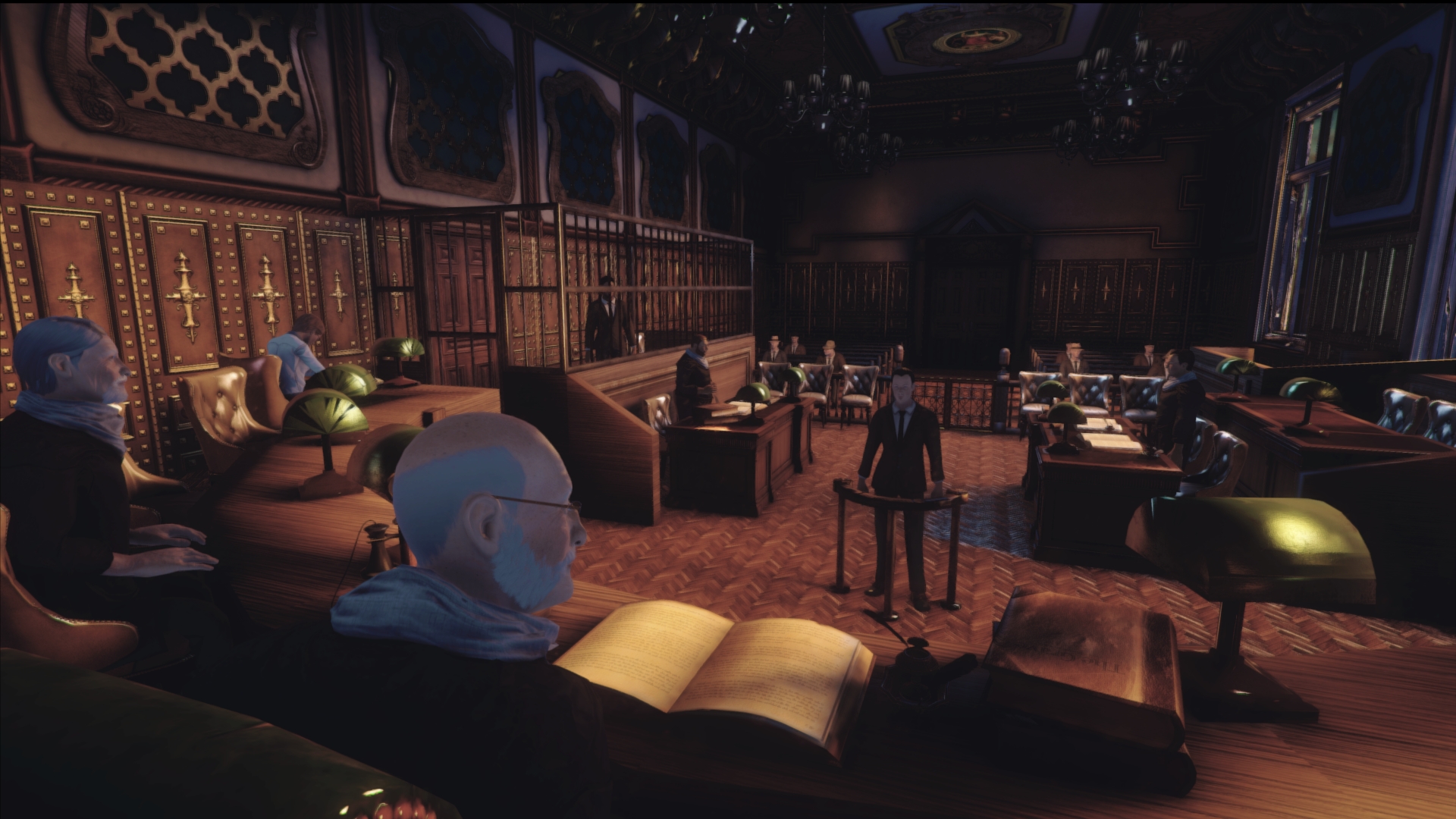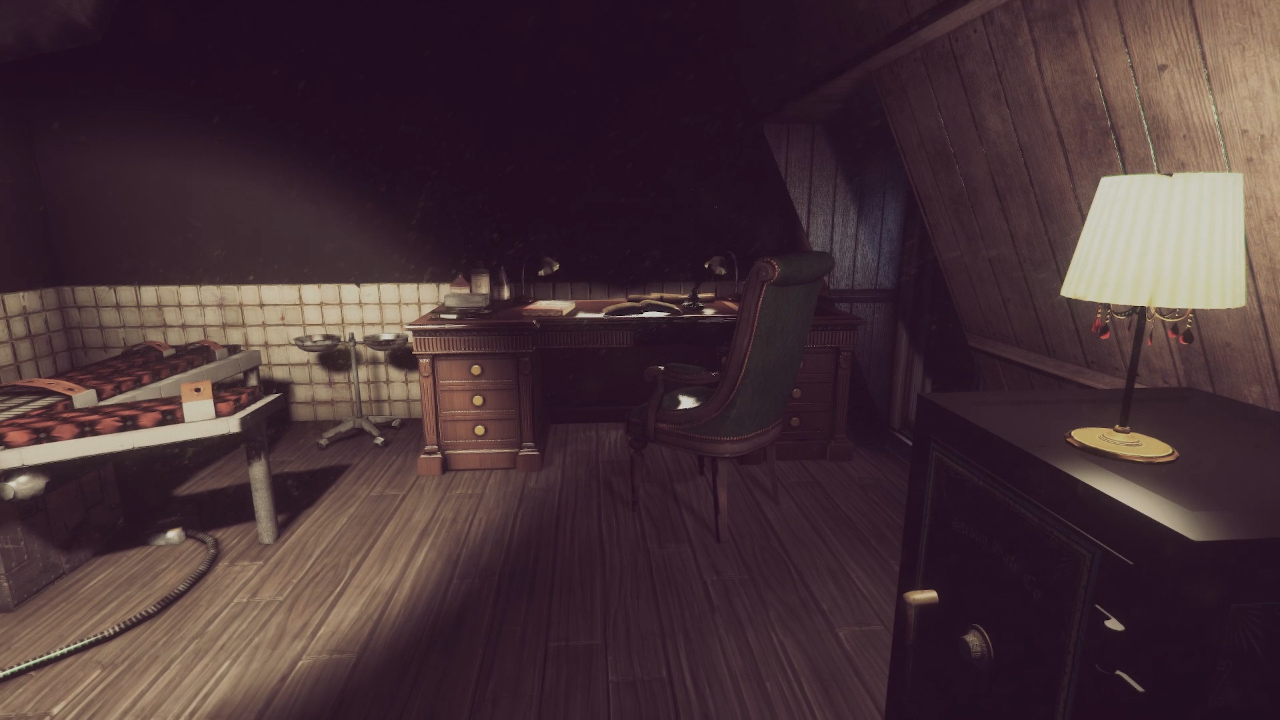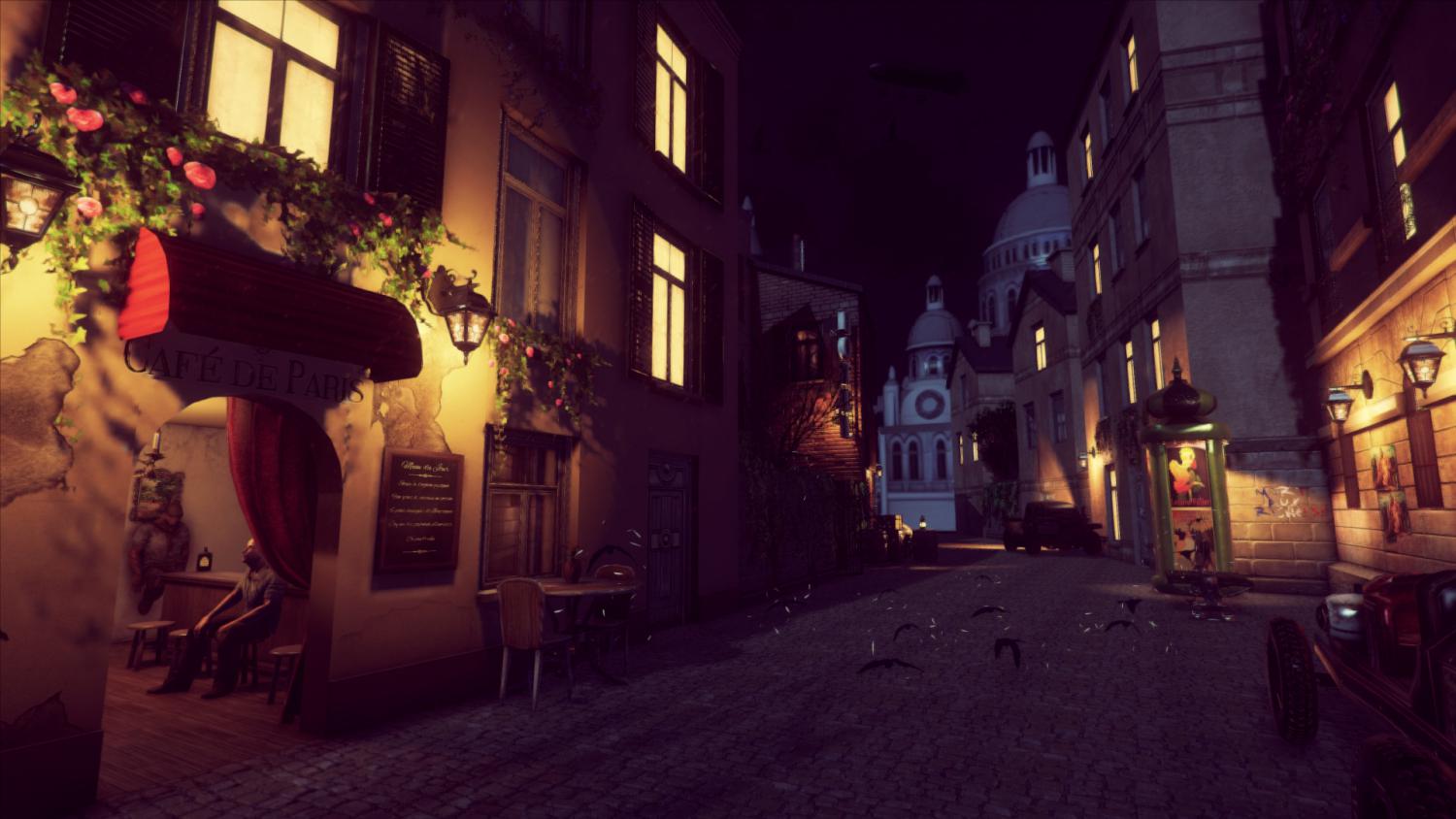I love a murder mystery. Something I love even more is when new ideas are injected into old genres. That’s exactly what Bohemian Killing does. It’s a murder mystery like any other, but this time you know who did it — you just don’t know how or why. The story is delivered incredibly well, doing a great job of connecting the dots while also offering multiple endings throughout a variety of different playthroughs.

Bohemian Killing is set in 1894 Paris. It begins with Alfred Ethon (the accused) standing in the hallway of a hotel with just a dagger and a pocket watch in hand. There isn’t much to do here except continue into a hotel room at the end of the corridor. Once entering the room you find Marie Capet, the victim of this tale, crawling across the floor in fear. Your only option is to stab her with your dagger. And that’s how the game begins. After the title credits, the game cuts to Alfred in court, where he stands accused of killing Marie Capet, and has to recount the events of that evening in an attempt to clear his name.
Obviously, we know he did kill her — at least that’s what the prologue would suggest — but now it’s time to try and clear Alfred’s name. This is the most interesting aspect of Bohemian Killing, as the story has the potential to follow one of many different paths. You could plead insanity, or that you were under the influence of alcohol, or that you acted in self-defence, among many other testimonies.

When Alfred begins recounting the events of the night of Marie Capet’s murder, you get to play out his testimony, deciding what to interact with, which in turn dictates the story. There are no dialogue options, unlike most other games that feature multiple outcomes. The way the story changes here is influenced directly by what you are making Alfred do. Particular events of the evening are already set out, so it’s up to you to either prove Alfred was there or not, and if so, whether he had a reasonable excuse. For example, at half past eleven your neighbor walks past you and you’re covered in blood; perhaps you had just nipped over to the racist bar across the road where you were abused for being a gypsy — a perfectly reasonable excuse as to why you would be covered in blood. Or, you can choose not to be there at that time.
It’s super simple to keep an eye on events and times — pressing ZL brings up a list of the events, and you still have your pocket watch assigned to B, as per the prologue. You can also flick through any evidence you’ve collected by pressing ZR, as well as the prosecution’s evidence. The game helps the player, saving them the need to get a pen and notepad to keep track of everything. The only issue with all of this is that it can be a little too simple, especially when the hints from the attorney can essentially tell you all the different options you have. Luckily, though, you don’t have to use the attorney’s help. So, once you know what you’re doing after your first playthrough, it can easily be made more challenging.

In truth, I’m unsure of how many endings there are, even after playing through the game a few times. After finishing the first playthrough it says one out of eight has been completed. However, on the next screen, where it offers an overview of your decisions and a newspaper headline describing the events of your case, it instead says out of nine. Nonetheless, eight or nine, there’s plenty of variety in regards to endings, even if some endings require really specific actions that would be too difficult to simply fluke.
As you progress through Alfred’s account of the events as they are unfolding, he will narrate what he’s doing to the court. It works surprisingly well, from the larger events like the aforementioned incident at the bar, to the smaller occurrences like deciding to take the stairs instead of the elevator. If you do anything strange or out of the ordinary, such as knock on a neighbor’s door late at night, then the judge will question these actions. Alfred’s responses are automated, so, once again, it’s really down to what you make Alfred physically do that will impact his case. Where certain events happen at certain times, it’s up to you to figure out how to get Alfred where you want him to be in relation to what you’re doing. There are plenty of things around the small sandbox area that you can interact with if you need to kill some time.

The gameplay in Bohemian Killing is smooth and simple, and heavily rewards exploration as a means to help you paint a whole picture of the events. Unfortunately, it doesn’t look too pleasing. It’s not terrible, but the first-person perspective is definitely a good decision as the character models are poor. Some of the voice acting can also leave a lot to be desired — on more than one occasion a character sounded a bit like Sacha Baron Cohen in Les Misérables. However, this is a very low-budget game, and although this may show with the visuals, the concept is incredibly well-executed and is the intriguing tale you would hope for with a murder-mystery game.
Bohemian Killing’s approach to storytelling is great, and the endings are varied enough that it’s more than worth playing again, especially considering a single playthrough can easily be achieved in under two hours. From the moment you finish your first playthrough, you want to jump straight back in to see what other endings you can get, and trust me, they’re not all rainbows and sunshine.
Review: Bohemian Killing (Nintendo Switch)
Very Good
Bohemian Killing isn’t the prettiest game in the world, but it’s certainly a fascinating experience. It delivers on both its concept as a good ol’ fashioned whodunnit, as well as its unconventional approach to storytelling.


